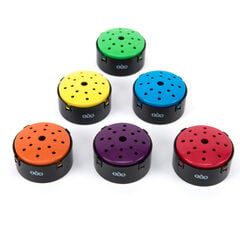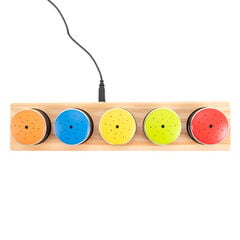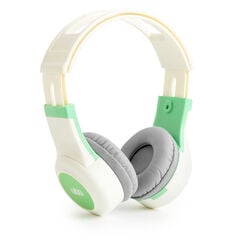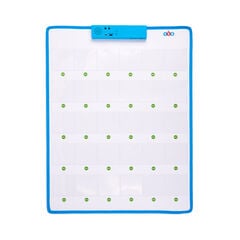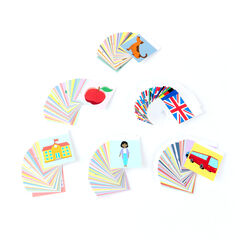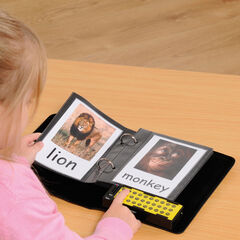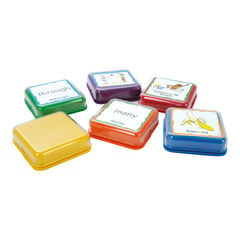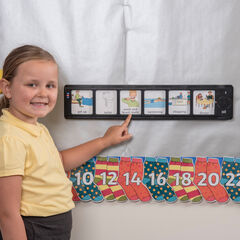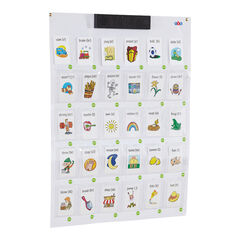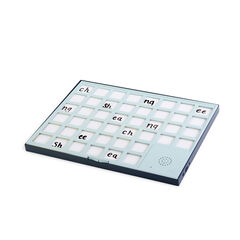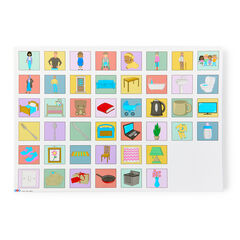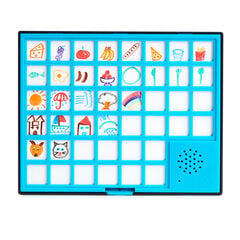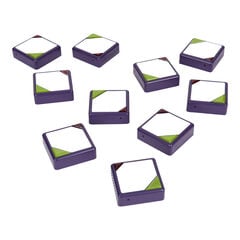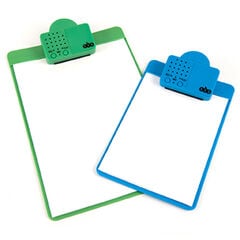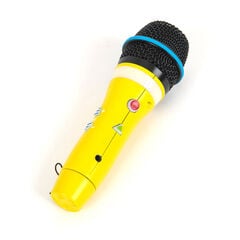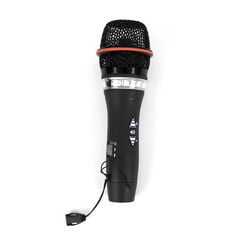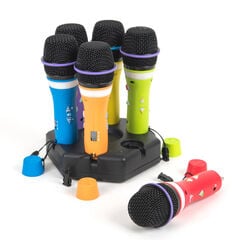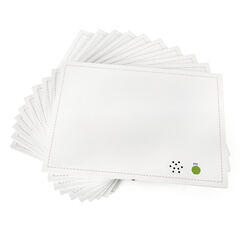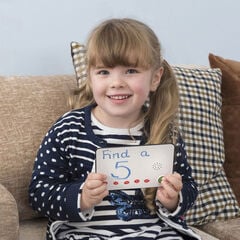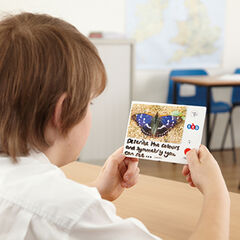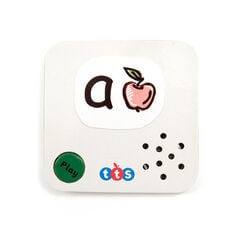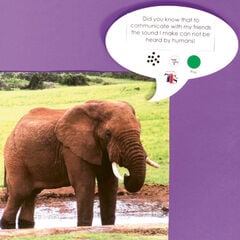Read this blog by Jodie Lopez to understand how technology can support oracy in your classrooms.
How technology can support the stages of Oracy
Whenever I used to hear the word ‘oracy’ it was linked to the idea of being a ‘good orator’. Often the idea is that oracy is all about the ‘public speaking’ level of talk. Nowadays, we hear more about oracy linked to the primary curriculum, though it is still often thought of as that end goal of a child having confidence and the skills to stand in front of an audience and present. But how does that look through the different stages of progression? And how does it look for the children who may never reach that end goal? How can we be confident to speak about one subject, but be rendered mute by another? How can we have confidence to speak fluently in one language, whilst failing to even understand in another?
In this blog I would like to look at the different stages of Oracy. I will also explore how technology can support each phase, whilst making oracy accessible to every child.
Building confidence from thin air
I was speaking recently to a friend who was frustrated. She has spent 2 years practising her Spanish skills online. However, she still lacks any confidence when conversing with people in real life. As someone who loves linguistics and language learning I reassured her that this was a perfectly acceptable path of progression. When we learn our mother tongue, as babies, no one even expects us to hold fluent conversations before the age of 2 (though some rare talents may manage it!). We spend so much of our infancy in listening mode before any expectation is put upon us to speak – let alone speak publicly, with confidence, perfect pitch and intonation! Why do we put such pressure on ourselves to transfer skills immediately to a new language? Why do we not allow ourselves to revert to infancy when we are learning?
Why also do we think that just because we can orate well on topics we know about, that we should also be brilliant speakers with topics we have not spent time learning? I would class myself as generally a confident public speaker. However, I would never expect to stand up and talk successfully about quantum physics to a room full of scientists!
Oracy is not entirely a standalone skill. Yes, there are elements which are transferable when it comes to the end goal of public speaking – such as pace and projection – but we always need time to build up our confidence when we are presented with new content, subjects, topics, or languages. Children need this too which is why it is so important to embed oracy across the curriculum. It is more than just a stand alone tool which sits squarely within the English, or language curriculum.
How oracy is applied in language learning
When we teach languages to children we go through a few stages before expecting confident speakers of the target language. We start with learners listening to us speaking. We model good pronunciation. We repeat. We often show an image to match the word/phrase. We will often have the word written too so we can point to the image and word while we say it. We build them up to demonstrating their understanding of what they have heard. We may not expect them to say the word themselves for a while. We may say the word for “apple” and hold up an apple and an orange, asking them to point to the one we said.
We might then move to having an array of fruit images in front of them while we say “apple”, so they have to pick from more choices. We are looking for their knowledge based on listening, long before we expect them to have to say the word back to us. Eventually we build to them saying the word, which may start earlier if we ask for a class response i.e. everyone repeats it together. But we take our time before asking a child to stand alone and say the word in front of peers. Because that confidence needs to grow.
From there we go on to using the word in phrases. It is a long time before we expect two children to debate the merits of choosing an apple versus an orange! That would be a huge leap. We need to afford children the same time and opportunities to develop in oracy too. And technology can help us with that along the way.
Technology to support oracy
If we think about oracy having four potential stages of development these might roughly be categorised as:
- Listening (and understanding)
- Communicating (in various forms)
- Speaking (conversationally with peers or teacher)
- Speaking confidently (public speaking or presenting)
These may not look like a single line of progression per child. A child might be a confident public speaker in science but take a backseat in discussions on geography, for example. It is important to allow that switch and wait for the child to bring their transferable skills into play when they are ready. But we can harness and encourage all stages of oracy across all curriculum subjects by using a few different techniques and technologies.
To read more about oracy across the curriculum why not head over to our blog- Oracy Across the Curriculum by Michael Gardner
Listening (and understanding)
When children are in the listening phase, they need the time and space to absorb new language. This could be literally a new language or could be new vocabulary within a subject. It could also be more subtle that the words themselves. It could be to do with learning a different way to speak i.e. when we learn how to debate and defend our position versus simply talking to a friend. This means that a child who we think of as very confident may go more silent for a while as they process this new information. This does not mean they have ‘gone backwards’. It just represents a pause and is usually followed by a leap forward in their abilities.
We can support the listening phase for all children, no matter what their age and stage in other areas, by providing opportunities to listen and demonstrate understanding without needing to speak at all.
Ways technology can support the listening stage of oracy
Resources such as, Sound buttons, and other recordable technologies, can make this easy in any subject. You could use the Talking Point Premiums, for example, to record a few key words or phrases. Mix them up, then ask children to put them in the right order. By getting the order right they can show they understand what they have learned from listening, but they do not have to say anything out loud. This works with EYFS ordering phonic sounds to make words, right through to Year 6 explaining the journey of blood through the circulatory system.
More ways to support listening with technology
You can also give children the opportunity to listen without speaking through small group time using the Easi-Ears or ClassCast systems. This can be a great way for children to focus on their learning – and works especially well, in my experience, for children for whom the classroom can be a noisy and overly sensory place.
I like to record some information from my lessons and let children listen back at their leisure with the headphones on, maybe nestled comfortably into a bean bag in the reading corner. You can use this for absorbing the information through song, from your own speaking, or by downloading useful content and podcasts you find online.
Again, this works in all subjects. It is also a great way to have children listen to great orators as part of their oracy learning too. I like to download a few different (age appropriate) podcast snippets and let children listen to ‘good’ and ‘bad’ examples. When they hear people saying “erm” a lot or speaking too fast for the audience it helps them to improve their speaking. It is also very enlightening if you let children listen back to themselves! Using the headphones for this makes it less intimidating than hearing themselves whilst also seeing the reactions of others.
Communicating (in various forms)
Some children may never be considered to be ‘great orators’ but they can all become great communicators. Giving children the chance to communicate is a vital step in every phase of development. From learning to speak about what they know to learning to speak about new content.
Ways technology can support the communicating stage of oracy
The Interactive Talking Mat and Talking Recordable Photo Albums are great examples of tools which can give children an audience and a voice without them needing to stand up and present in the whole school assembly.
Allow children to draw pictures to add into the mat or album and record quick explanations for what you see. This could be used for their art work, with them recording their process or motivation. Or could be used to build an information book or display for others to look at. For children who either cannot or do not wish to do the recording themselves, they could appoint someone – child or adult – to speak for them to explain what they would like to say. But their picture is still the main element for the audience so that pride in their work remains.
For some children it could be that making something for them can unlock their ability to communicate. You can record key phrases or words which they can use as a communications board to speak with peers or teachers. Phrases such as “I need the toilet” or “Can I play with you?” are useful for day-to-day schooling. You can also apply the same process to making a talking mat based on the current subject so that the child can press the right button to demonstrate their understanding. Ask them about photosynthesis, for example, and ask them to press the buttons for the answers, with the pictures and sounds supporting them choosing the right answer.
Providing recordable technology is an affordable way to open up the curriculum for all. Giving every child a voice at whatever stage of oracy they are in for each subject.
Speaking (conversationally with peers or teacher)
Building up to speaking can be a big deal for some children, especially in a busy classroom. For some children this stage comes as naturally as breathing once they have listened for a while! The later children make it, unintentionally, even harder for the former group sadly. Which means there needs to be strong understanding that the children who are not yet confident may just need a little extra scaffolding.
Ways technology can support the speaking stage of oracy
The Clever Tiles can be a great way to help promote confidence by firstly giving some extra reassurance – which is all many children need. These can be used to teach phonic sounds lower down the school, or for words and phrases higher up the school.
The tiles play in order when they are connected. This means children can put them in the order they want and then press play to hear the word/sentence played back. The children can then identify if the order they have chosen is correct. The Clever Tiles also offer a more fluent way than the standard sound buttons which need clicking one at a time so do not represent more natural speech.
Again, these can be used for children to be in the communicate phase above, by allowing children to record what they want to say away from the ears of others but then support them having the courage to speak the sentence aloud themselves to the teacher or with peers. This can especially work for children who are learning to communicate in a new language. By hearing themselves speak the sentence via the tiles, or by a teacher recording the tiles for them to listen to, they can build up to speaking aloud at their own pace.
They may need to just listen once or may want to listen up to 50 times before repeating it themselves. These tools give them the time to do that away from the crowd as needed. They can be used as part of specific intervention groups or just left out in a corner of the classroom for use when needed.
More ways to support speaking with technology
Another great technology tool for encouraging children to speak is Kitt the Learning Companion. Kitt acts like a little buddy for a child. You can add recordings to Kitt to play to the child, and the child can also record their responses. I have seen many children start speaking to Kitt long before they are confident to speak aloud with peers. The lack of pressure really supports their development. Children can also practise public speaking with Kitt by recording themselves doing the talk to Kitt and then playing it back to themselves. This can work at any level the child is at. I have given Kitt to one learner who does nothing but sing pop songs to Kitt!
Any recordable technology, such as the talking pegs or clipboards, can also be used around any setting, with children of any age. They are great for prompting questions and encouraging turn taking. Teachers can record one half of a conversation, leaving pauses in the relevant spaces. This allows children to practise taking part in the conversation in a stress free and personal environment.
Speaking confidently (public speaking or presenting)
When I think of the TTS technology in relation to speaking confidently, I always think of the Easi-speak microphones. This was the first technology tool I embedded into my classroom as an NQT (many years ago now!) to support specific children. It then became the foundation of the technology we used to set up a whole school radio station. Children made their own podcasts and radio shows.
Ways technology can support the speaking confidently stage of oracy
Microphones such as this are portable and can be uploaded to a laptop later (so no sitting at a screen for hours is required). They are an essential part of every classroom in my opinion. I have used them to help children progress in both oracy and writing skills. They give them instant access to a way of recording their ideas which they can play back and refine. I have also left them in nursery classrooms to return at the end of the week and find recordings of ‘Twinkle Twinkle Little Star ‘– the rap edition! They have also supported classes with debating skills, interviewing techniques and oracy development. There is something very powerful about children hearing themselves back.
Children who are very confident speakers in class often struggle more than expected when handed a microphone. The very act of listening back may make them cringe! However, it can also spur them on and support them in developing their speech into the perfectly honed pitches and performances we are often aiming for when we talk about oracy. The Easi-speak microphones have a headphone jack input so you can allow them the freedom to listen back without prying ears nearby. This gives them the space they (and we all) need to develop at our own pace without the pressure of people listening to us when we are not ready to speak. Maybe if I practise with mine long enough, I can deliver that speech on quantum physics after all?!
In Summary
Technology can significantly enhance oracy development. It can provide an interactive way to practise speaking, listening and communication skills. It can offer pupils opportunities to engage in conversations, discussions and presentations that help build oracy skills.
Further blog posts
If you have enjoyed reading this blog- ‘How Technology can Support the Stages of Oracy’, then why not click here to take a look at more blog posts on oracy.
If you would like to explore resources to support oracy, click on the link below.
Explore resources to support Oracy
Many thanks to Jodie Lopez for writing this blog.
Jodie Lopez is an ex-primary school teacher who has won several awards for her use of technology across the curriculum. She moved from full-time teaching into working with education technology companies, to help bridge the gap between school and products/services on offer. As a Teaching Awards judge, she loves to see and hear about all the fantastic work teachers and schools are doing.
You can find Jodie at @jodieworld on Twitter, where she is always happy to answer any questions you have about technology for your school.






















